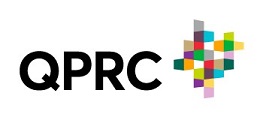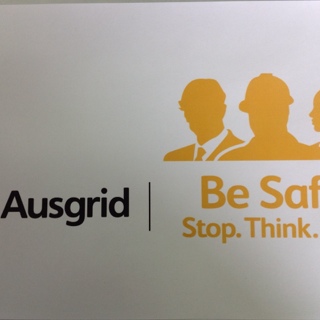Information
-
Contract Title
-
Contract Number
-
Project Number
-
Contract Description
-
Contractor being Audited
-
Audit Date
-
Auditor(s)
-
Auditee Representatives
-
Comments / Scope / Caveats
Section 1 : Planning for Work Health and Safety
-
The contractor must plan for safety and be able to demonstrate that they are aware of the hazards / risks associated with the work they are undertaking and that they have appropriate risk minimisation strategies (controls) in place. This section considers how well the Contractor has planned for safety and how well those plans are working on this work site / location. This may be satisfied by a Safety Management Plan or included as part of the Project Management Plan. For smaller projects it may be managed through a Job Safety Assessment or Risk Register but must be able to demonstrate pro-active planning.
-
There is a document or series of documents that clearly describe how workplace health and safety (WHS) will be managed for this site.<br>(Note – the document or series of documents that detail how safety will be managed will herewith be referred to as the Plan. If there is no Plan, the audit cannot continue).
-
Document References
-
Comments
-
The Plan includes details of :–<br>• The Contractor’s name and contact details<br>• The location (address) of the work site<br>• The planned work <br>• Planned start and end dates
-
Document References
-
Comments
-
The Plan includes the names, positions and roles of all people at the work site with specific responsibilities for health and safety. <br>(This could include an organisational chart demonstrating the relationship of these responsibilities)
-
Document References
-
Comments
-
The Plan describes arrangements in place consultation, cooperation and coordination of activities relating to health and safety with other parties that may be on site when work is being undertaken.
-
Document References
-
Comments
-
The Plan describes how the contractor’s workers, other contractors and visitors to the work site will be managed and monitored.<br>(This should include inductions and signing on to SWMSs and JSEAs)
-
Document References
-
Comments
-
The Plan describes processes in place for managing health and safety incidents that may occur
-
Document References
-
Comments
-
The Plan includes site specific safety rules and arrangements for ensuring that all people at the work place are informed of those rules
-
Document References
-
Comments
-
The Plan details arrangements for the collection, assessment, monitoring and reviews of Safe Work Method Statements
-
Document References
-
Comments
Section 2 : High Risk Work
-
High risk work is defined in the Construction Code of Practice and should also include specific high risk work identified either by SA Water or the Contractor as part of their respective risk assessments. This section considers how well high risk work activities are being managed.
-
The program of works has been reviewed to identify high risk work likely to be undertaken as part of planned work at this work site. <br>(The same review should identify if no high risk work was to be undertaken so the review must be undertaken as part of the risk assessment and planning process)
-
Document References
-
Comments
-
Where high risk work has been identified, there is a process in place for ensuring that Safe Work Method Statements are developed and implemented for all identified high risk work prior to work commencing.
-
Document References
-
Comments
-
The process ensures that SWMSs are reviewed prior to commencement of work by workers actually conducting the work – and that changes or errors are identified and corrected prior to work commencing.
-
Document References
-
Comments
-
The process requires the final, working version of SWMSs are to be retained at the workplace where the work be carried out (or be somewhere where it can be accessed promptly).<br>(This is necessary if the process needs to be reviewed or any changes occur. The SWMS should always be treated as a work in process)
-
Document References
-
Comments
-
The process ensures that all workers that are to be involved in the work have had the contents of the SWMS communicated to them in a way they are likely to understand.
-
Document References
-
Comments
-
The process requires SWMSs to be retained for two years following the occurrence of a notifiable incident.
-
Document References
-
Relevant Photos
-
Comments
-
The process requires that all workers involved in high risk work are notified of any changes or revisions to a SWMS.
-
Document References
-
Comments
-
There is evidence that the process is being applied at this work site.
-
Document References
-
Comments
Section 3 : Specific Work Activities
-
Where workers will be commonly or regularly involved in high risk work that may require SWMSs, the organisation should have formal standing arrangements or work instructions in place to provide workers with generic guidelines on how this work should be done. These arrangements will be referred to when workers are preparing their SWMSs. This section reviews how well the organisation manages core activities associated with high risk work.
-
Specific controls are in place to minimise risks associated with trenching and excavation work
-
Document References
-
Comments
-
Specific controls are in place to minimise risks associated with working at heights
-
Document References
-
Comments
-
Specific controls are in place to minimise risks associated with buried and overhead services
-
Document References
-
Comments
-
Specific controls are in place to minimise risks associated with mobile plant
-
Document References
-
Comments
-
Specific controls are in place to minimise risks associated with working near road or rail corridors (Work Zone Traffic Management)
-
Document References
-
Comments
-
Specific controls are in place to minimise risks associated with the storage and use of hazardous substances and dangerous goods
-
Document References
-
Comments
-
Specific controls are in place to minimise risks associated with working with airborne contaminants and potentially hazardous atmospheres
-
Document References
-
Comments
-
Specific controls are in place to manage permit to work systems for work including but not limited to<br>• Hot work<br>Confined space
-
Document References
-
Comments
-
Specific controls are in place to minimise risks associated with falling objects
-
Document References
-
Comments
Section 4 : Induction, Training and Certification
-
The organisation needs to ensure that all workers on site have training for specific high risk work they may be involved and that all people on site are made aware of how to manage risks specific to the site. This section evaluates how well the organisation ensures that people on site have appropriate training.
-
There is a process that ensures all workers on site have received “General Construction Induction Training (White Card)”
-
Document Refernces
-
Comments
-
There is a process that ensures all workers and visitors to the site receive appropriate inductions relevant to the work they are doing and risks they are likely to be exposed to.<br><br>(This should include reference to how SA Water Site Inductions are to be presented where SA Water management representatives are not on site)
-
Document Refernces
-
Comments
-
There is a system that ensures all persons have appropriate certificates or licenses to undertake high risk work including operation of plant and equipment.
-
Document Refernces
-
Comments
-
The organisation needs to ensure that all workers on site have training for specific high risk work they may be involved and that all people on site are made aware of how to manage risks specific to the site. This section evaluates how well the organisation ensures that people on site have appropriate training.
-
There is a process that ensures all workers on site have received “General Construction Induction Training (White Card)”
-
Document Refernces
-
Comments
Section 5 : General Workplace Hazard Management Arrangements
-
The organisation should have systems in place to ensure hazards are identified and managed as part of normal work activities. This section reviews general hazard management on site.
-
There is a process for the identification, assessment and treatment of hazards that occur on site. This process should include but not be limited to –<br>• Reporting and responding to hazards<br>Workplace inspections
-
Document References
-
Comments
-
There are processes in place to maintain cleanliness, housekeeping and hygiene on site.
-
Document References
-
Comments
-
There are systems that ensure workers have reasonable access to meal areas and other welfare facilities.
-
Document References
-
Comments
-
There is a traffic management plan or similar that clearly designates traffic and parking areas to minimise risk of interaction between pedestrians and vehicles.
-
Document References
-
Comments
Section 6 : Emergency Response
-
Management needs to plan for emergency response by identifying potential emergency situations and having plans in place that ensure appropriate and timely responses. This section reviews the organisation’s emergency response for this work site.
-
Potential emergency situations have been identified (i.e. fire, explosion) and appropriate response arrangements are in place
-
Document References
-
Comments
-
Local medical, fire and emergency services response details have been sourced and details are readily available to all workersarrangements are in place
-
Document References
-
Comments
-
First aid facilities are in place and appropriate to the nature of the work and locations
-
Document References
-
Comments
-
Relevant local organisations including councils and emergency response groups have been notified of any high risk work that may affect them or other members of the general public.
-
Document References
-
Comments
Section 7 : Recommendations
-
Reference
-
Issue (What is the non-conformance)
-
Suggestion (What could or should be done to rectify the non-conformity)
-
Responsibility
-
Comments

















